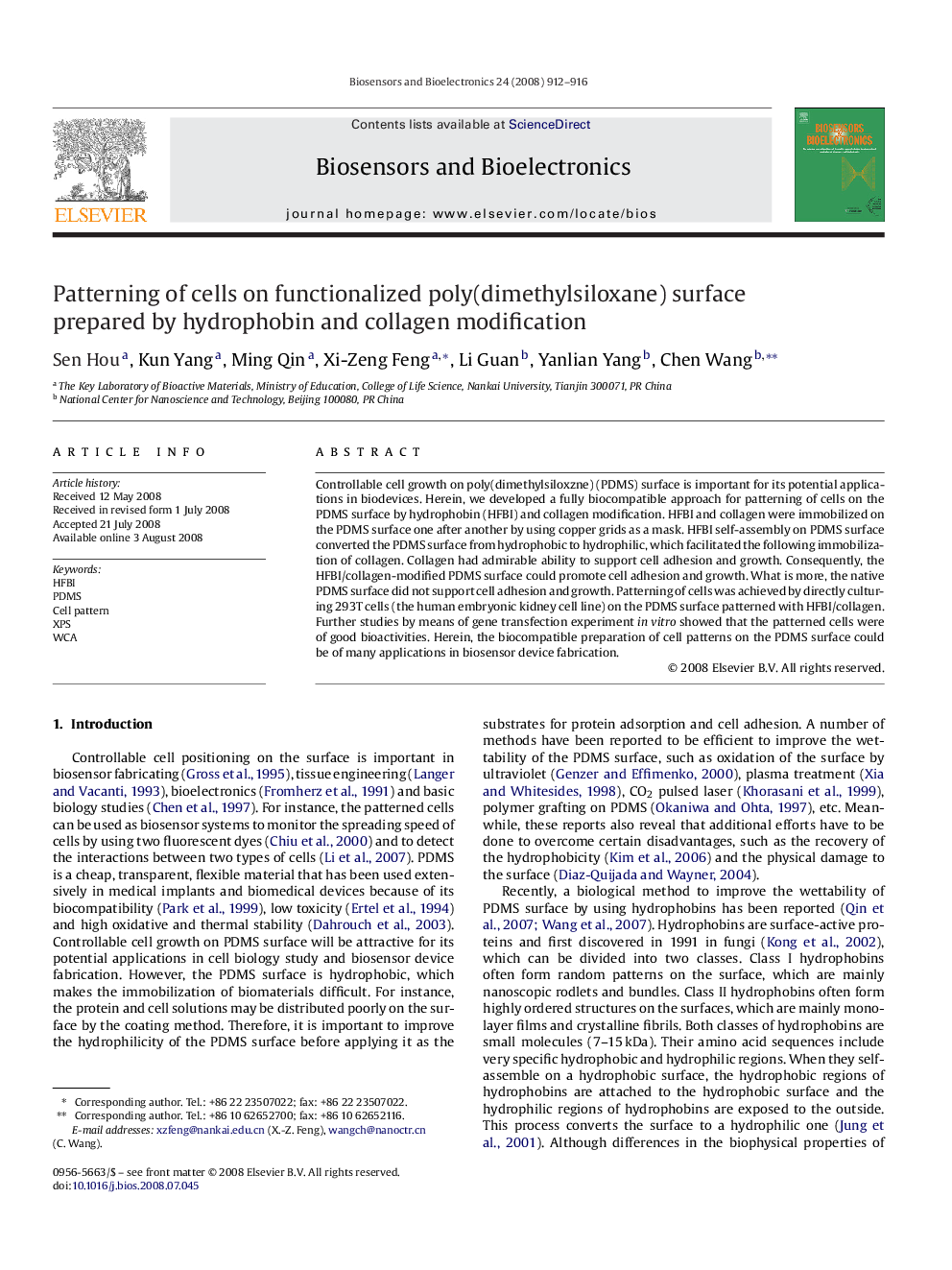| Article ID | Journal | Published Year | Pages | File Type |
|---|---|---|---|---|
| 869914 | Biosensors and Bioelectronics | 2008 | 5 Pages |
Controllable cell growth on poly(dimethylsiloxzne) (PDMS) surface is important for its potential applications in biodevices. Herein, we developed a fully biocompatible approach for patterning of cells on the PDMS surface by hydrophobin (HFBI) and collagen modification. HFBI and collagen were immobilized on the PDMS surface one after another by using copper grids as a mask. HFBI self-assembly on PDMS surface converted the PDMS surface from hydrophobic to hydrophilic, which facilitated the following immobilization of collagen. Collagen had admirable ability to support cell adhesion and growth. Consequently, the HFBI/collagen-modified PDMS surface could promote cell adhesion and growth. What is more, the native PDMS surface did not support cell adhesion and growth. Patterning of cells was achieved by directly culturing 293T cells (the human embryonic kidney cell line) on the PDMS surface patterned with HFBI/collagen. Further studies by means of gene transfection experiment in vitro showed that the patterned cells were of good bioactivities. Herein, the biocompatible preparation of cell patterns on the PDMS surface could be of many applications in biosensor device fabrication.
